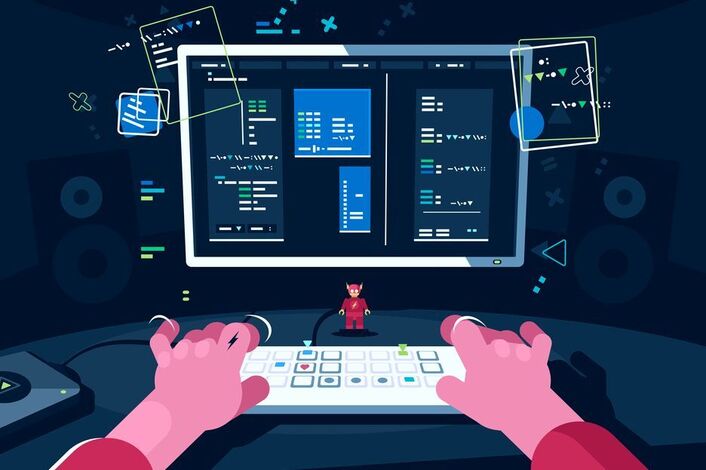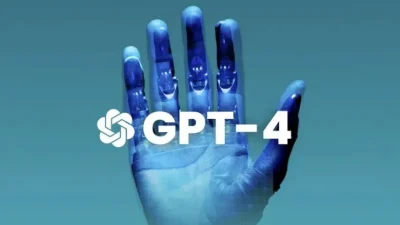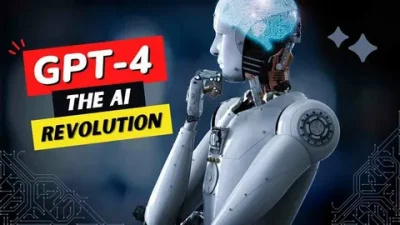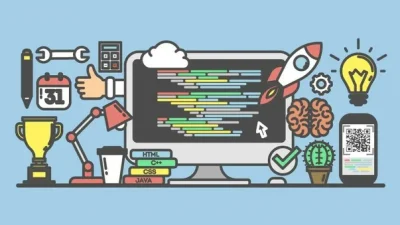In the fast-paced world of software development, where efficiency and precision are paramount, tools like GPT-4 are revolutionizing the way developers write, debug, and understand code. GPT-4, with its advanced natural language processing capabilities, serves as a valuable assistant for both seasoned professionals and newcomers in the programming landscape. This article explores how GPT-4 aids programmers by generating code, fixing bugs, and simplifying complex algorithms.

The Role of GPT-4 in Code Generation
One of GPT-4’s most notable applications in programming is its ability to generate code snippets based on textual descriptions. Developers can describe a task in plain language, and GPT-4 translates it into functional code. This functionality streamlines the development process, especially for repetitive or boilerplate coding tasks.
Key Benefits of Code Generation with GPT-4
- Time Efficiency. Automating repetitive tasks allows developers to focus on more critical aspects of their projects.
- Error Reduction. Code generated by GPT-4 often adheres to syntax rules and best practices, minimizing human error.
- Language Versatility. GPT-4 supports multiple programming languages, making it a universal tool for polyglot programmers.
Use Cases of Code Generation
- Template Creation. Generating starter templates for web development, such as HTML structures or CSS styles.
- API Integration. Writing boilerplate code for connecting to APIs.
- Quick Prototyping. Creating quick drafts of applications or features.
Examples of Code Generation Applications
| Use Case | Description |
|---|---|
| Web Development | HTML templates, CSS styles |
| API Integration | Authentication, endpoint communication |
| Data Processing | Scripts for file manipulation, data parsing |
Debugging with GPT-4: Identifying and Fixing Bugs
Debugging is an inevitable part of the development process, often consuming significant time and effort. GPT-4 offers a unique advantage by analyzing code and pinpointing potential errors. By providing an explanation for the issues and suggesting fixes, GPT-4 accelerates the debugging process.
How GPT-4 Assists in Debugging
- Error Explanation. GPT-4 identifies the error and provides a plain-language explanation.
- Suggested Fixes. It offers solutions, ensuring the code adheres to best practices.
- Pattern Recognition. By recognizing patterns in code, GPT-4 can detect common pitfalls and logical errors.
Real-World Applications
- Syntax Errors. Identifying missing characters or misplaced syntax.
- Logical Bugs. Highlighting and correcting issues in code logic.
- Performance Issues. Suggesting optimizations for inefficient code.
Common Debugging Scenarios with GPT-4
| Issue Type | Example | GPT-4’s Role |
| Syntax Errors | Missing semicolons, brackets | Identifies and corrects |
| Logic Errors | Incorrect conditional statements | Explains and provides fixes |
| Performance Issues | Inefficient loops or algorithms | Suggests optimized alternatives |
Simplifying Complex Algorithms
Understanding complex algorithms is often challenging, especially for developers new to a domain. GPT-4 acts as an explainer, breaking down intricate algorithms into comprehensible steps. This functionality is particularly beneficial in education and onboarding scenarios.
Benefits of Algorithm Simplification
- Educational Aid. Assisting students and junior developers in understanding advanced concepts.
- Knowledge Transfer. Helping teams onboard new members by explaining existing codebases.
- Cross-Disciplinary Insights. Making algorithms accessible to professionals from non-programming fields.
Commonly Explained Algorithms
- Sorting algorithms (e.g., QuickSort, MergeSort).
- Search algorithms (e.g., Binary Search, Depth-First Search).
- Machine learning models (e.g., decision trees, neural networks).
Examples of Algorithm Explanations
| Algorithm | Common Use Case | Simplification Example |
| QuickSort | Sorting large datasets | Step-by-step breakdown of partition logic |
| Binary Search | Searching in sorted arrays | Explanation of divide-and-conquer approach |
| Neural Networks | Predictive analytics in ML | Layer-by-layer functionality explanation |
GPT-4’s Versatility Across Programming Languages
One of GPT-4’s strengths is its support for a wide range of programming languages. Whether a developer is working on web applications, data analysis, or system-level programming, GPT-4 adapts to their needs.
Popular Languages Supported by GPT-4
- Python. Data analysis, machine learning, and scripting.
- JavaScript. Web development and interactive interfaces.
- Java. Enterprise applications and Android development.
- C++. Game development and performance-critical applications.
- SQL. Database management and queries.
Advantages of Multilingual Support
- Consistency. Developers can rely on GPT-4 for various languages within a single project.
- Cross-Platform Development. Simplifies the creation of software for multiple platforms.
- Ease of Learning. Helps developers transition between languages by highlighting syntactical differences and similarities.
Integration into Developer Workflows
GPT-4 seamlessly integrates into existing developer tools and workflows, enhancing productivity without disrupting established practices.
Common Integration Methods
- Code Editors. Plugins for IDEs like VS Code and IntelliJ IDEA.
- Chatbots. Integration with platforms like Slack or Discord for team collaboration.
- Version Control Systems. Using GPT-4 in Git workflows for commit suggestions and code reviews.
GPT-4 Integration Examples
| Tool/Platform | Integration Method | Benefits |
| Visual Studio Code | GPT-4 plugin for code assistance | Instant code suggestions and debugging |
| GitHub | GPT-4 for pull request reviews | Automated feedback on code changes |
| Slack | GPT-4 chatbot for team collaboration | Real-time coding advice and support |
Ethical Considerations and Limitations
While GPT-4 provides remarkable assistance, developers must be mindful of its limitations and ethical implications.
Limitations of GPT-4
- Accuracy: The generated code may occasionally include errors or suboptimal practices.
- Context Awareness: GPT-4 may lack understanding of project-specific requirements.
- Dependency: Overreliance on GPT-4 could hinder skill development for junior developers.
Ethical Implications
- Copyright Issues: Ensuring generated code does not inadvertently infringe on copyrights.
- Bias: Avoiding biases in algorithmic suggestions or generated solutions.
- Transparency: Clearly communicating when GPT-4-generated code is used in production.
Conclusion
GPT-4 has transformed the programming landscape by streamlining code generation, debugging, and algorithm explanation. Its multilingual capabilities and integration into existing workflows make it a versatile tool for developers across domains. However, understanding its limitations and using it responsibly ensures it complements, rather than replaces, human expertise.





